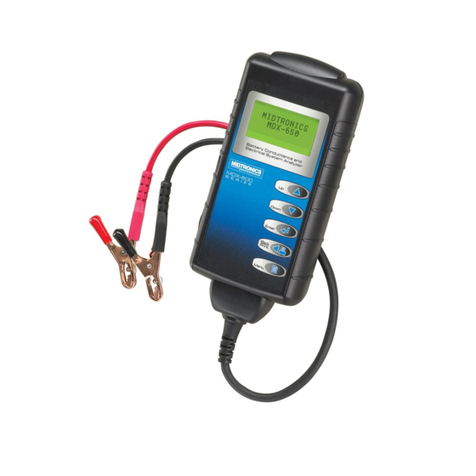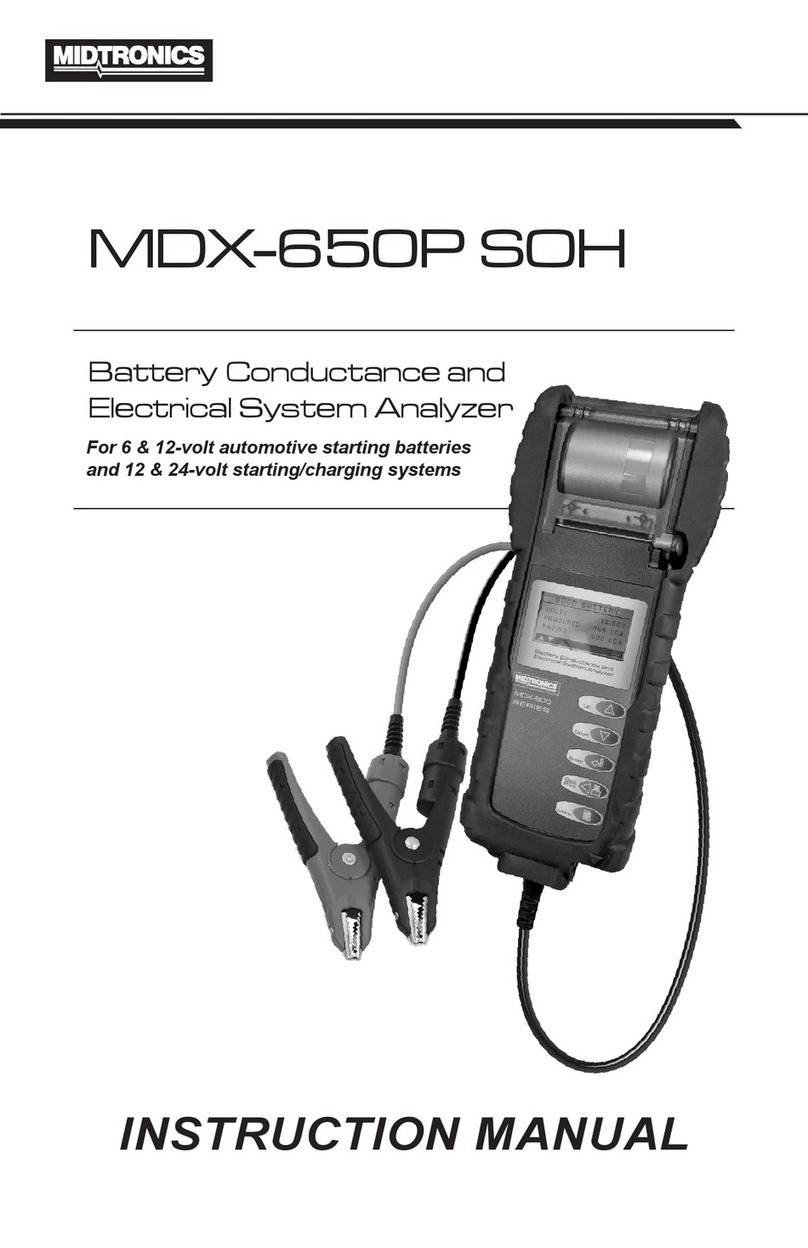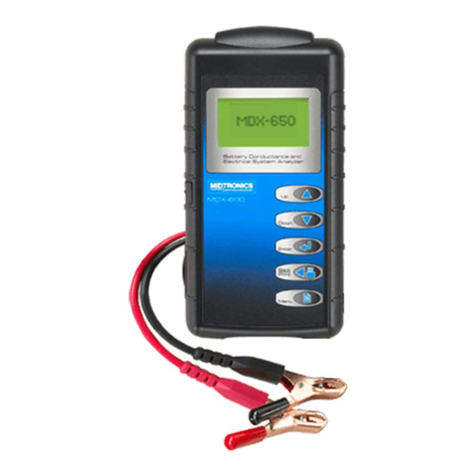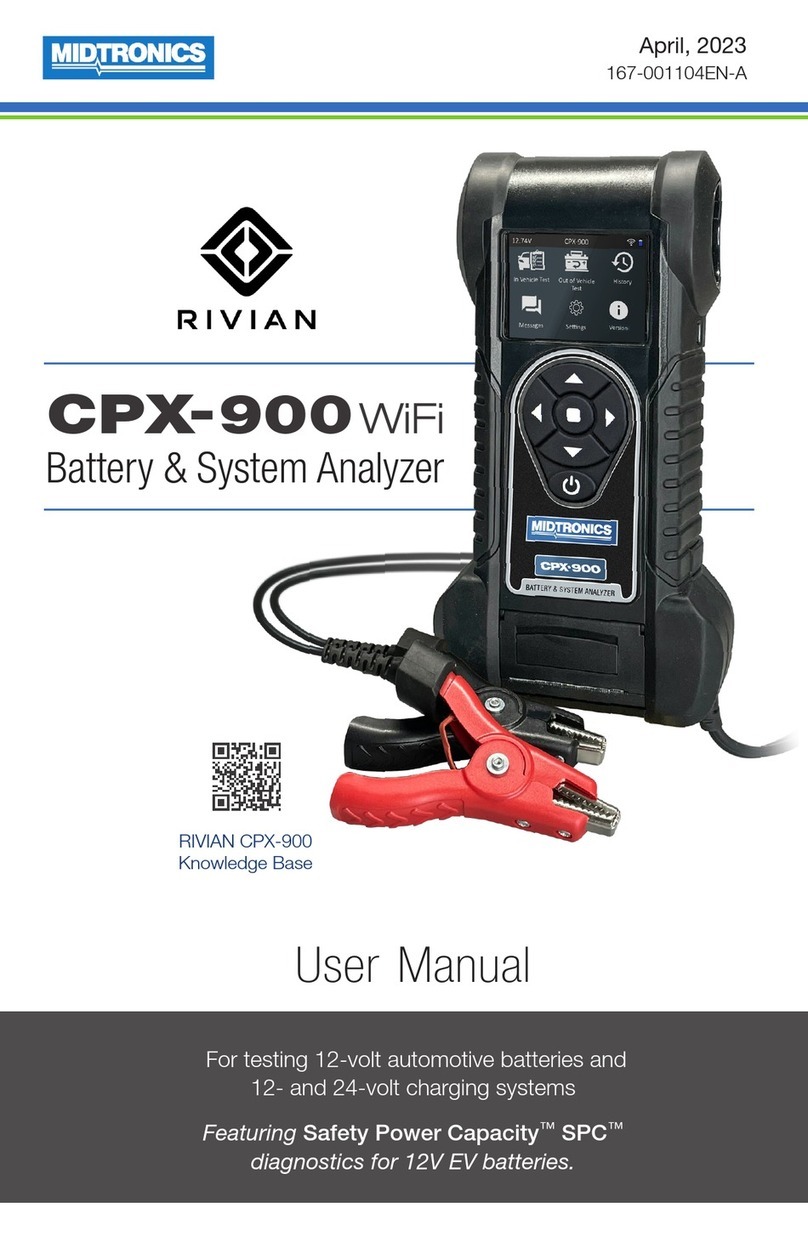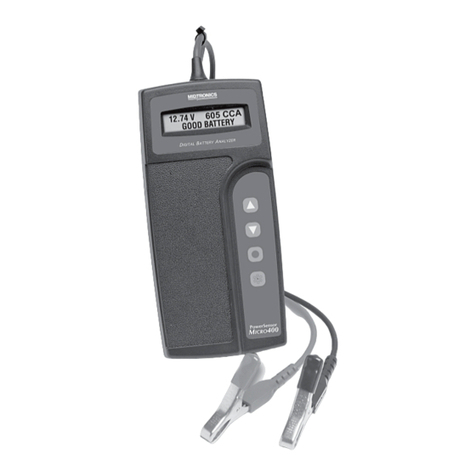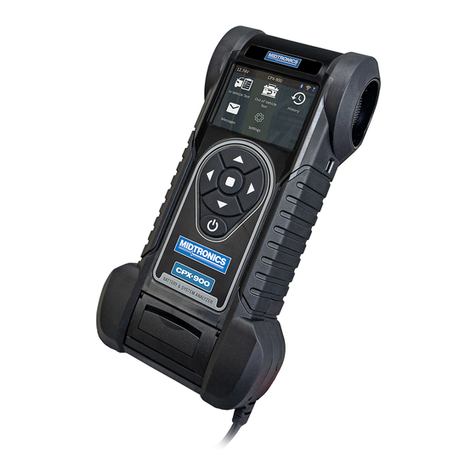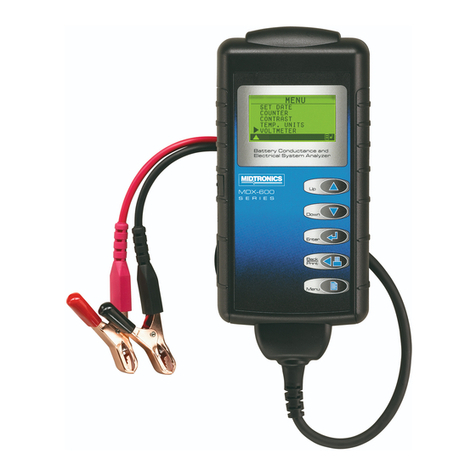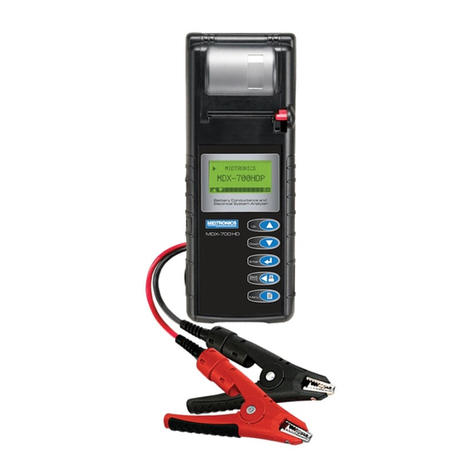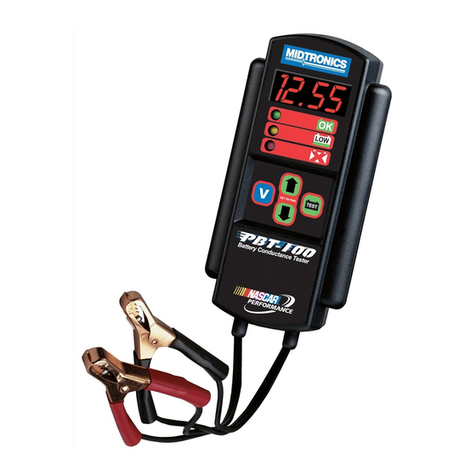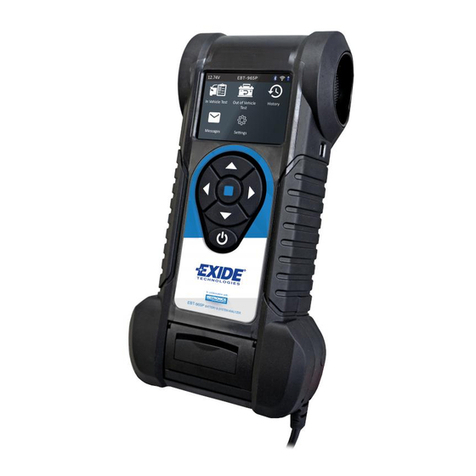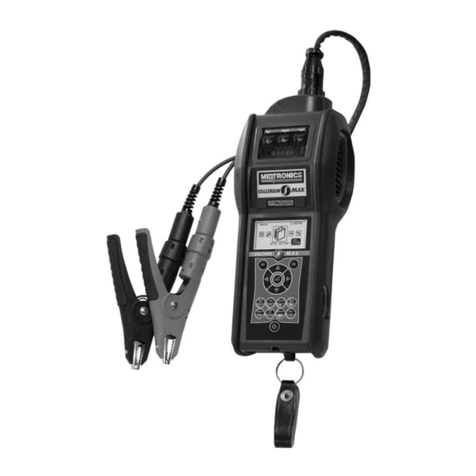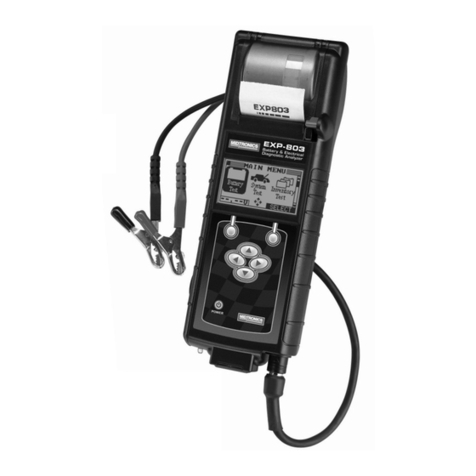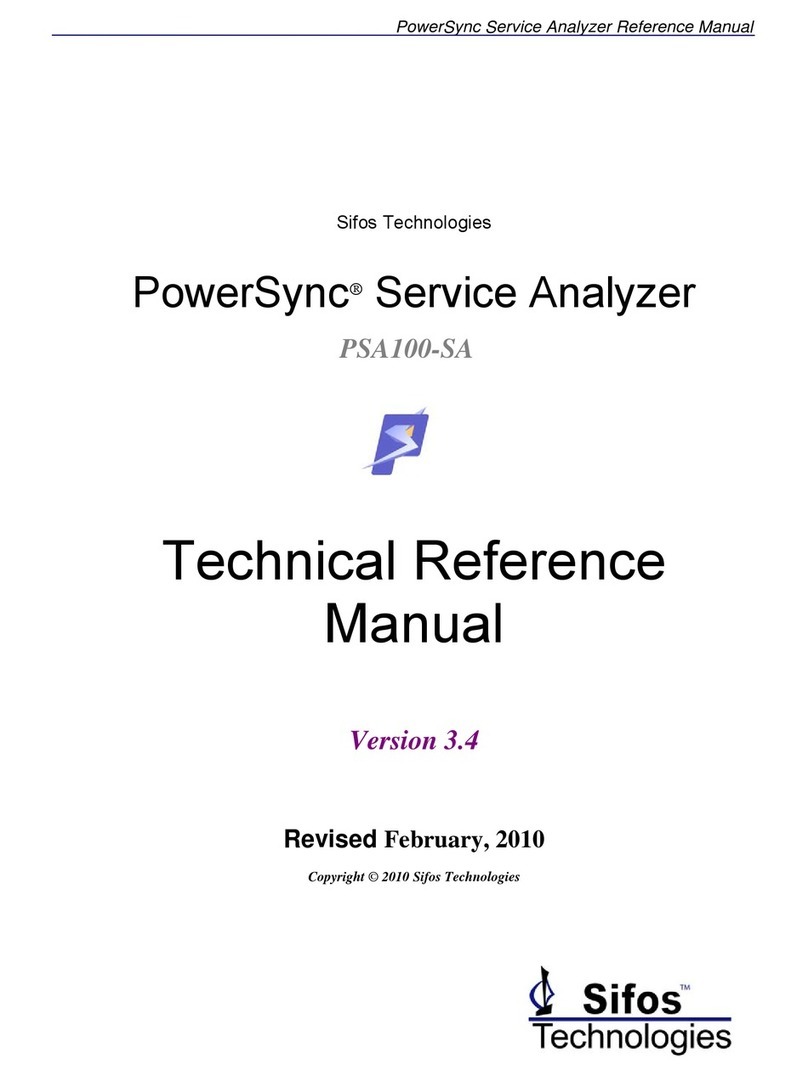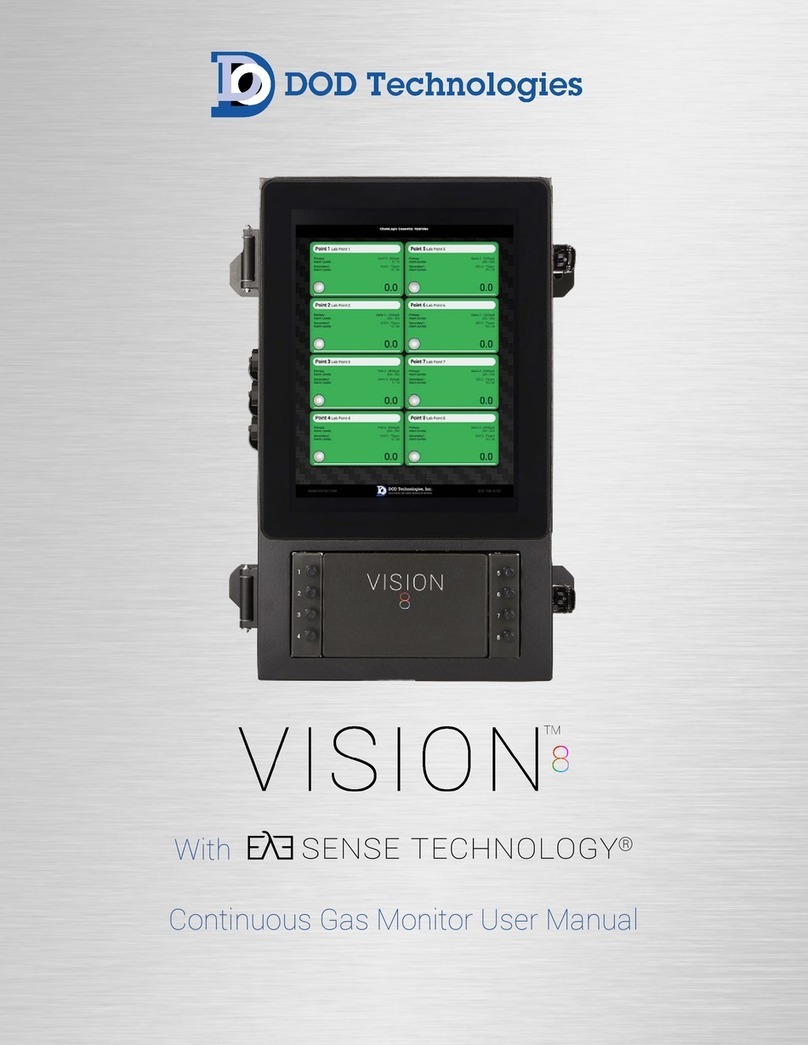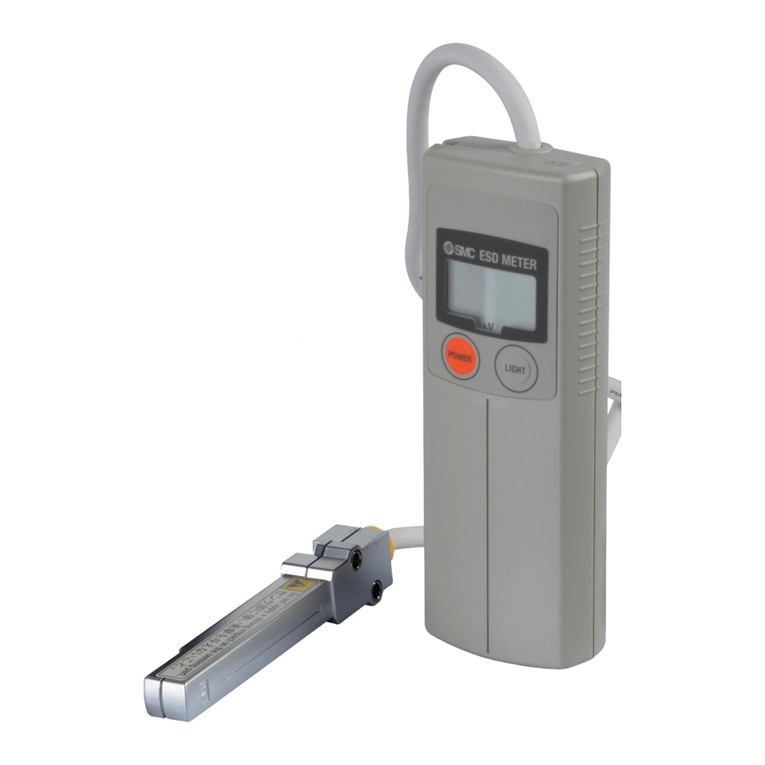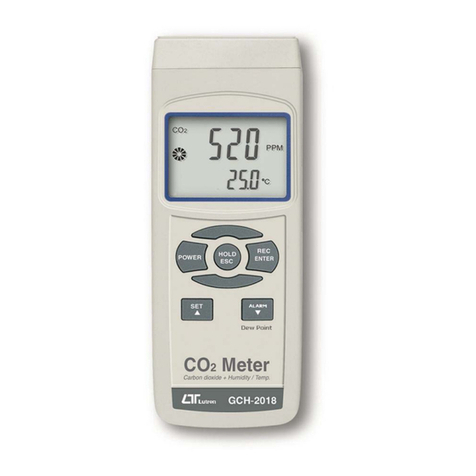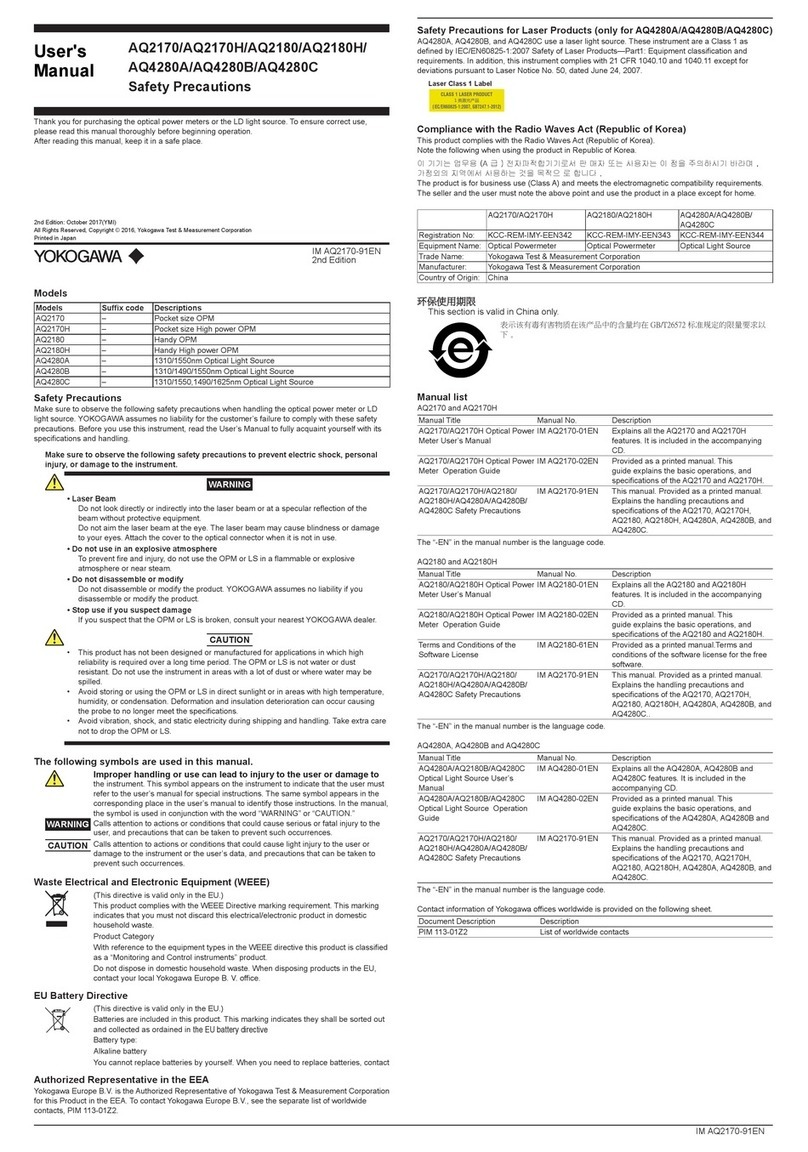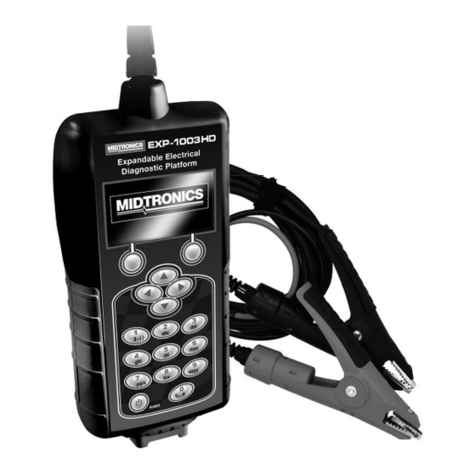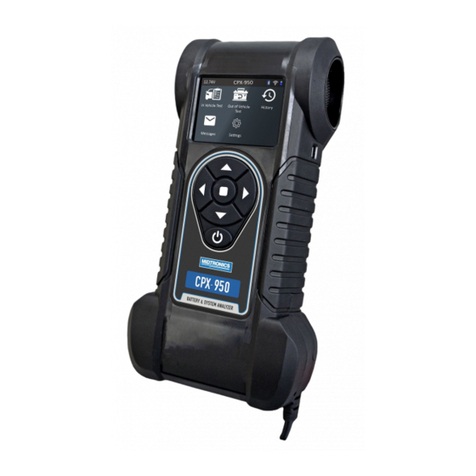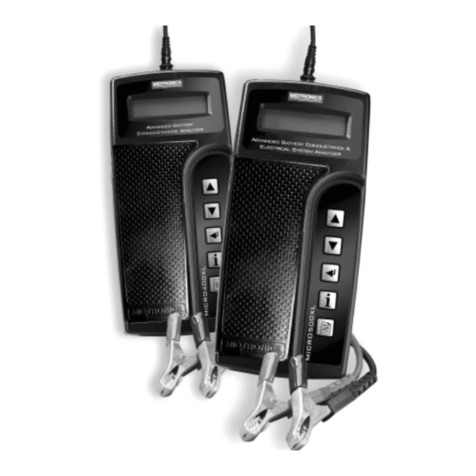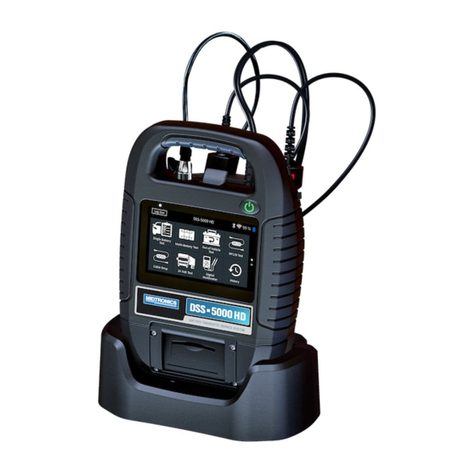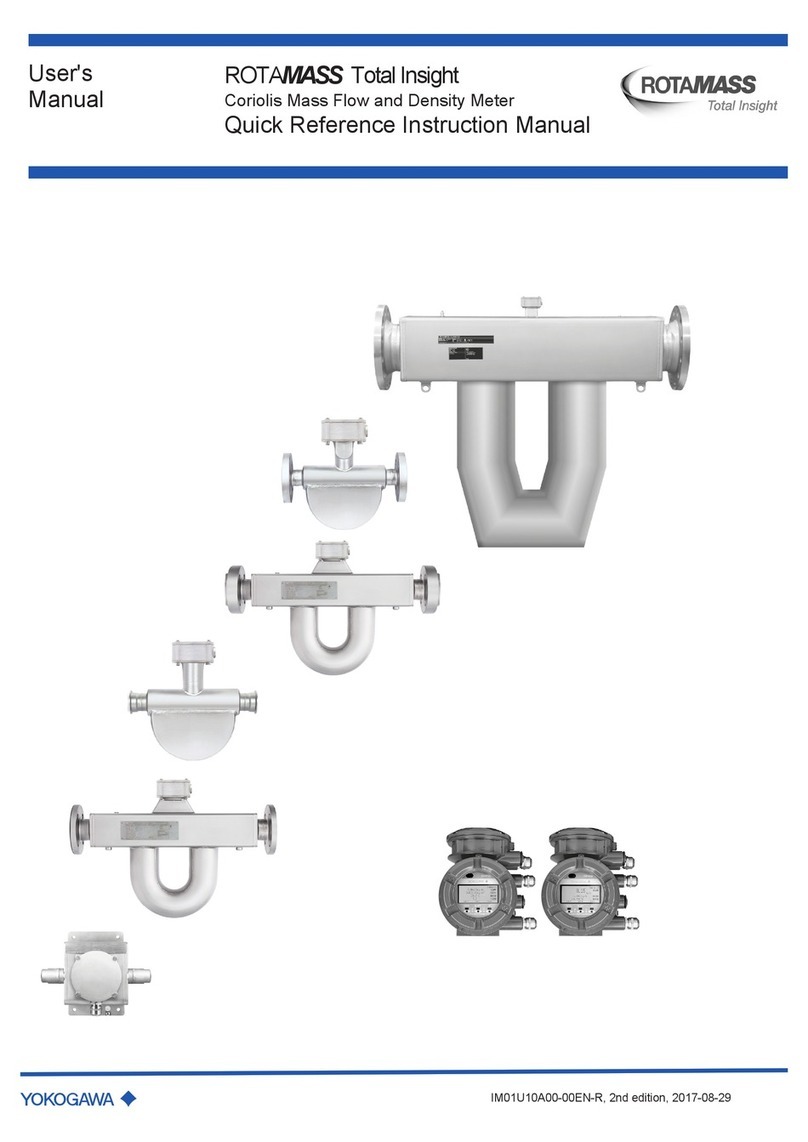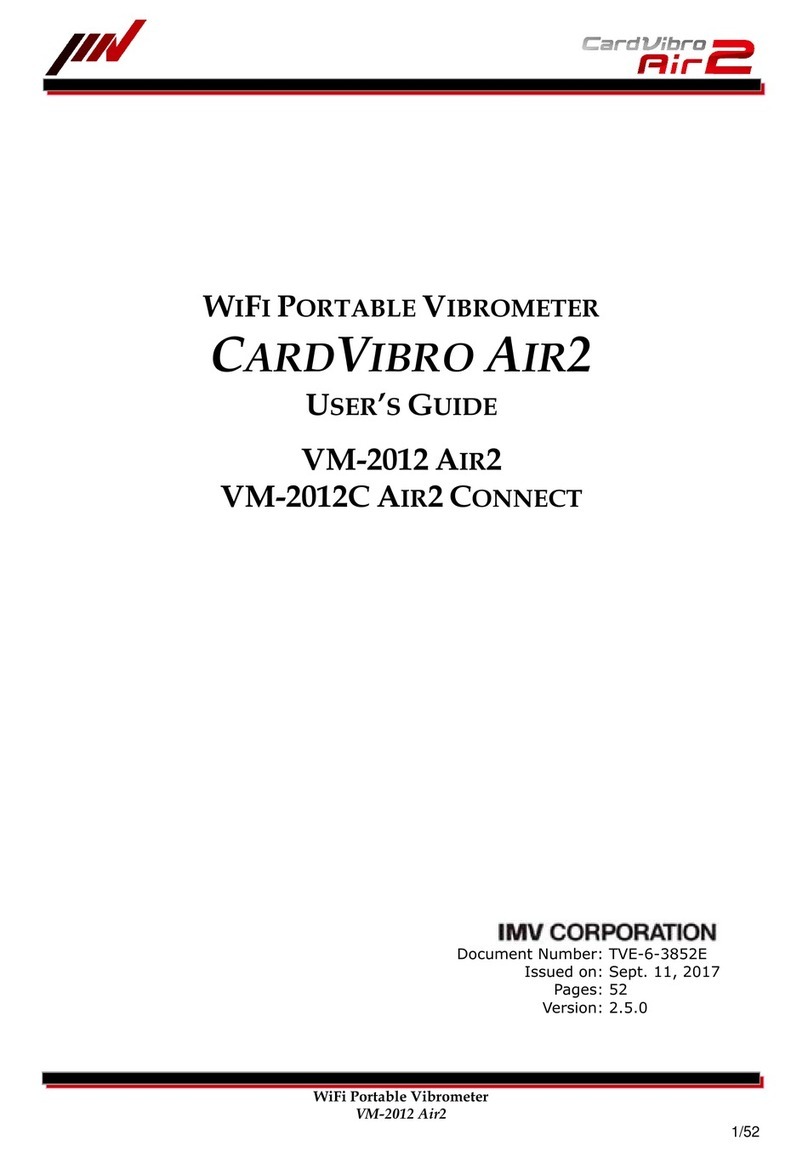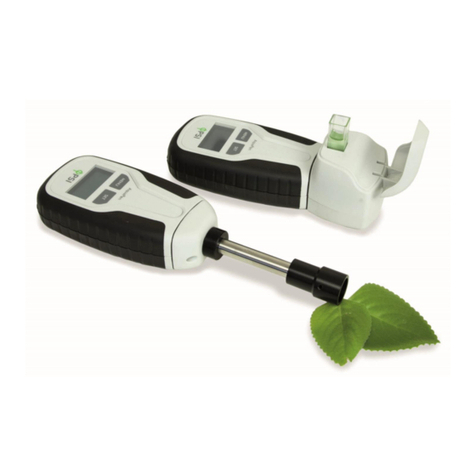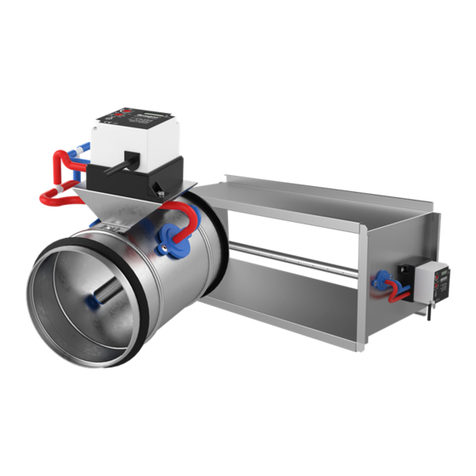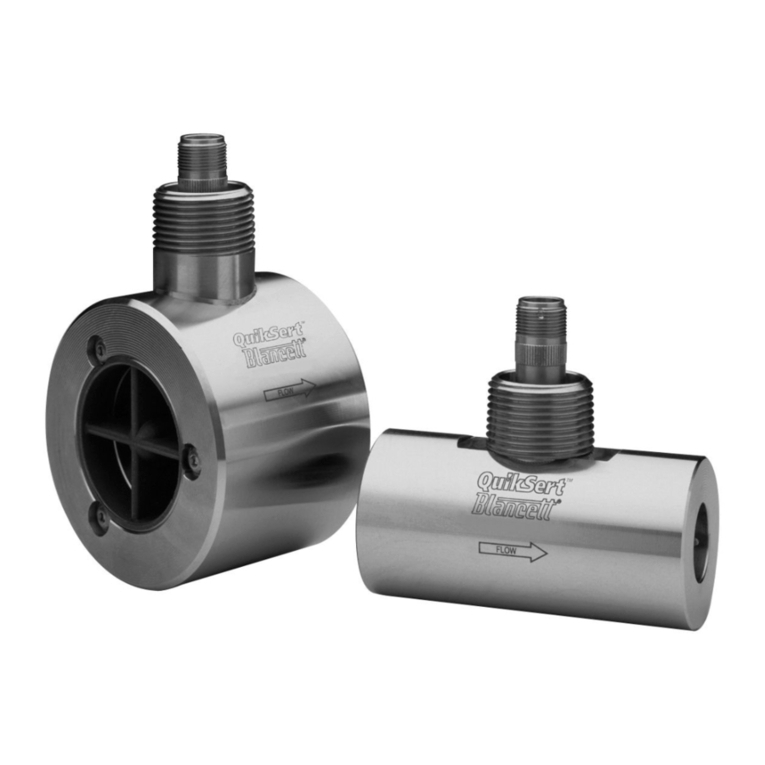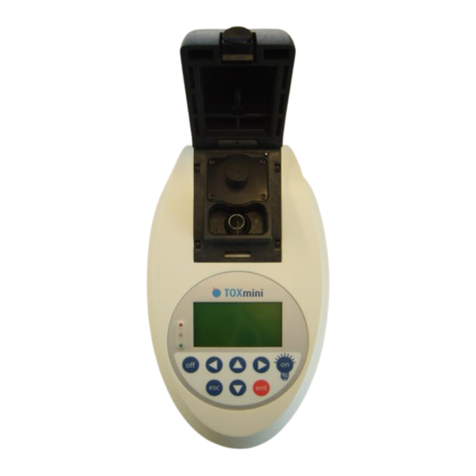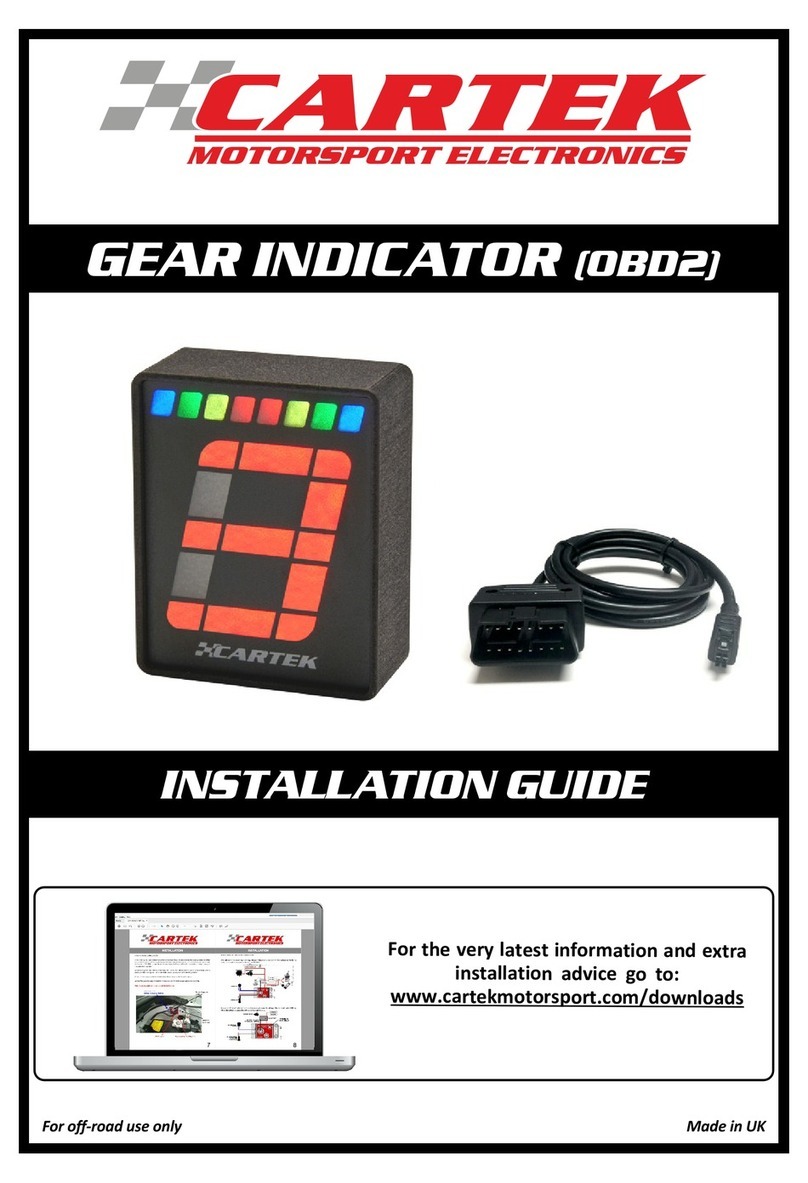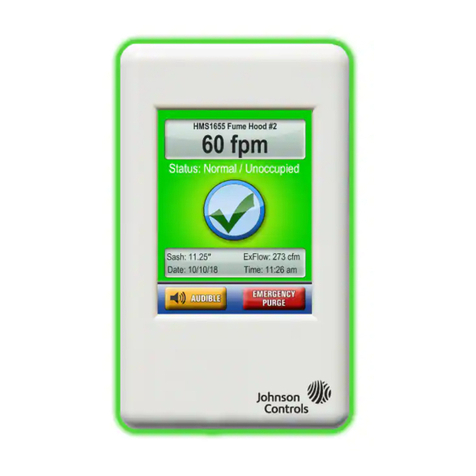
For testing 12-volt automotive starting batteries
rated in CCA, SAE, DIN, IEC, and EN
Patents
ThistesterismadeintheU.S.A.byMIDTRONICS,INC.andisprotectedby
oneormore of thefollowingU.S. Patents: 6,323,650;6,316,914;6,304,087;
6,249,124;6,163,156;6,091,245;6,051,976;5,831,435;5,821,756;
5,757,192;5,592,093;5,585,728;5,572,136;4,912,416;4,881,038;
4,825,170;4,816,768;4,322,685;Canadianpatents:1,280,164;1,295,680;
UnitedKingdompatents:0,417,173;0,672,248;Germanpatents:68923
281.0-08;69325 388.6; 9321 638.6; andotherU.S. and Foreignpatents
issuedand pending. Thisproductmay utilizetechnologyexclusively
licensedtoMidtronics, Inc. by JohnsonControls,Inc. and/or Motorola, Inc.
Service
Forservice, contact Midtronics foraReturnAuthorizationnumber,and
returnthe unit toMidtronicsfreight prepaid,Attention:RA#. Midtronics will
repairor replacethe testerand reship,the nextscheduled businessday
following receipt,using the same type carrier and serviceas received.
IfMidtronics determines thatthe failurewas caused bymisuse, alteration,
accident,or abnormal conditionof operation orhandling, purchaser will
havethe optionof purchasinga replacementtester or the unit will be
returnedfreight collect. Battery testers beyond the warrantyperiod are
subjectto therepair chargesin effect at that time.
Limited Warranty
This battery tester is warranted to be free of defects in materials and
workmanship for a period of one year from the date of purchase.
Midtronicswill, atour option,repair theunit or replace the unit with a
remanufacturedtester. This limitedwarrantyapplies onlytoMidtronics
batterytesters and doesnot coverany other equipment,static damage,
waterdamage,overvoltage, dropping unitor damage resultingfrom
extraneouscauses includingowner misuse. Midtronicsis notliable forany
incidentalor consequential damages for breach of this warranty.The
warrantyis void if owner attempts to disassemble the unit,or tomodify the
cableassembly.
P/N 168-074A 4/04 ©2004 Midtronics, Inc.
Testing Out-of-Vehicle:
Clean the battery posts or side terminals with a wire brush.
For testing side-post batteries, install and tighten the lead
terminal stud adapters. Failure to properly install the stud
adapters, or using stud adapters that are dirty or worn,
may result in false test results. Do not use steel bolts.
Testing In-Vehicle:
Turn off the vehicle and all accessory loads. Testing with the
ignition switch on or vehicle loads on may cause
inaccurate readings.
If the vehicle was running prior to testing, turn on the headlights
for 30 seconds to remove the surface charge. Let the battery rest
for 1 minute to recover before testing.
INSTRUCTION MANUAL
CAUTION: Because of the possibility of personal
injury, always use extreme caution when working with
batteries. Follow all BCI (Battery Council International)
safety recommendations.
WARNING: (Required by California Prop. 65) Battery
posts, terminals, and related accessories contain lead
and lead compounds, chemicals known to the state of
California to cause cancer and birth defects or other
reproductive harm. Wash hands after handling.
!
!
Advanced Battery Conductance/
Electrical System Tester
1. Connect the tester clamps to the battery: red to the positive
(+) terminal, black to the negative (–) terminal. For a good
connection, rock each clamp back and forth.
2. The battery rating system last selected will appear on the
display for 3 seconds, then the default rating. If the rating
system is correct, go to step 3 in “2. Battery Test.”
3. Disconnect the clamps and connect the black clamp to the
negative (–) terminal.
4. Press and hold the TEST button.
5. Connect the positive clamp (red) to the positive (+) terminal.
6. After the display shows the letters of the rating system with
dots(for example,.C.C.A ),release the TESTbutton.
7. Use the ARROW buttons to scroll to the correct rating
system.
Rating System* Increment Default Range
CCA 20 500 100–1400
SAE 20 600 100–1400
EN 20 600 100–1400
IEC 10 280 100–800
DIN 10 280 100–800
*For JIS, use the conversion table on the back of the PBT-300.
8. Press the TEST button to select the rating system. The
default rating will appear.
9. Continue with step 3 in “2. Battery Test.”
1. SELECTING THE RATING SYSTEM

